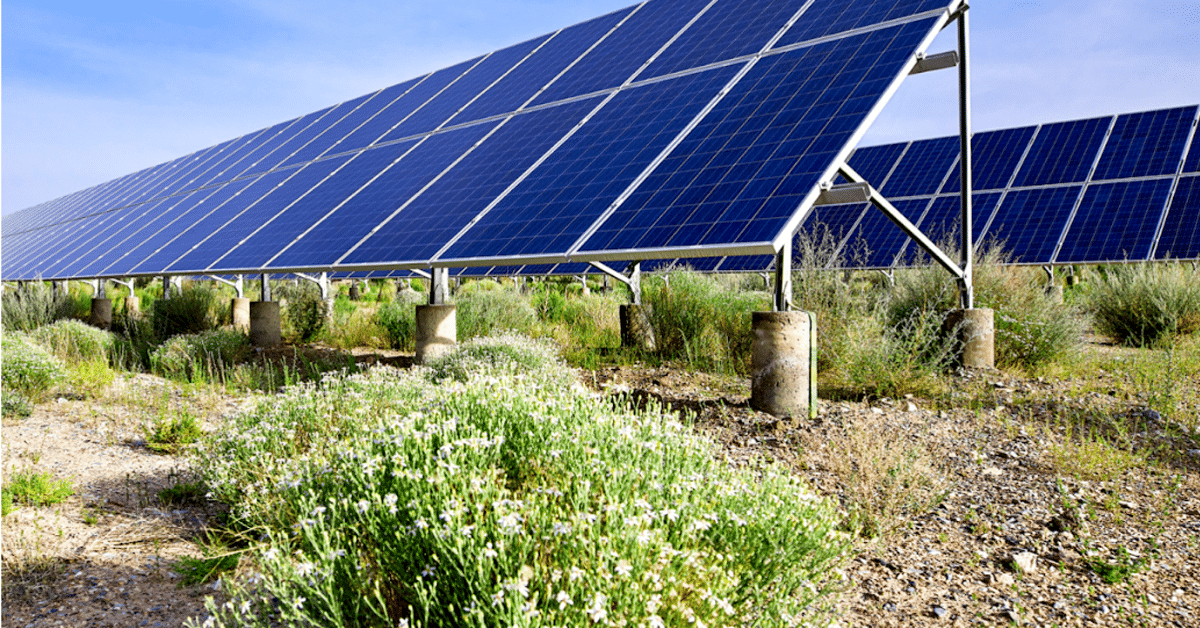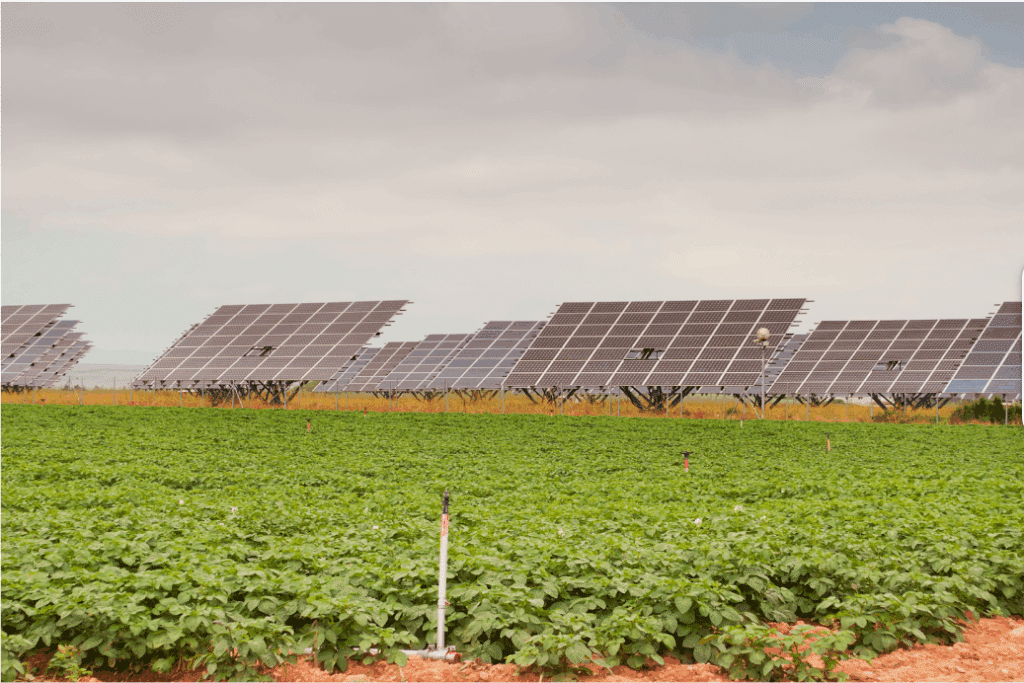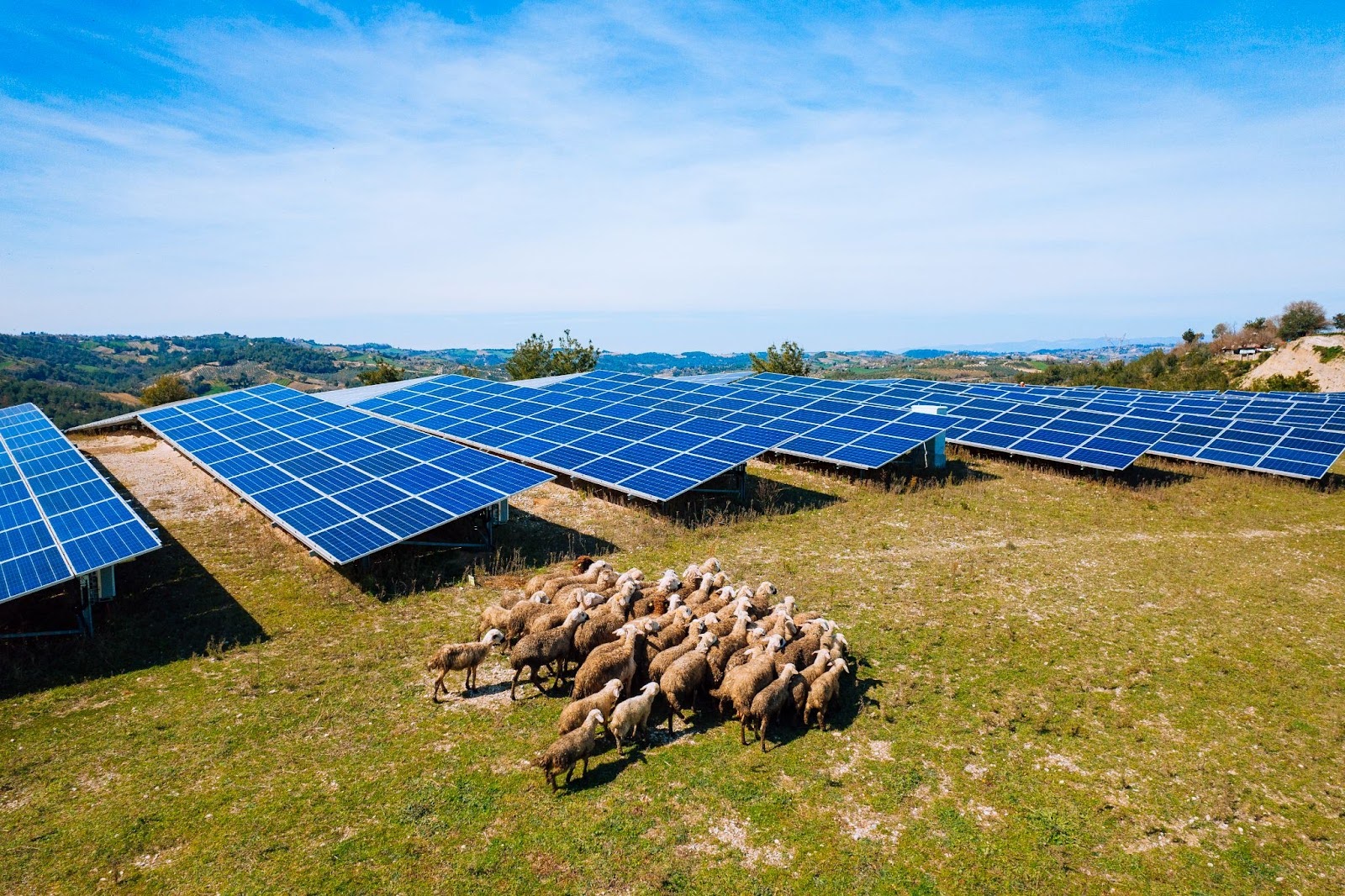POSTED
June 4, 2025
Guayule & Agrivoltaics: A Sustainable Solution for Rubber Production?
America runs on rubber, but what happens when the supply chain stretches too thin? With over 90% of its natural rubber sourced from overseas, the United States faces a critical question: how do we build a resilient, sustainable alternative at home?

As climate threats, disease, and rising global demand strain traditional rubber sources like Hevea brasiliensis, a new frontier is emerging from the deserts of the American Southwest: guayule (Parthenium argentatum). This native shrub, backed by leaders like Bridgestone and supported by federal funding, offers a promising path to domestically grown, drought-resilient rubber.
But there’s another innovation poised to amplify guayule’s potential: agrivoltaics, which involves growing crops beneath solar panels. Together, guayule and agrivoltaics could redefine sustainable agriculture, energy production, and rural prosperity.
Why the U.S. Rubber Supply Chain Is So Fragile
Rubber is essential to modern life, from car tires to hospital gloves. Yet the U.S. produces almost none of it domestically. Over 90% of natural rubber is imported, with $184 million worth (USTires.org) brought in during January 2025 alone, contributing to a trade deficit of $178 million. (OEC)
Global reliance on rubber from tropical trees like Hevea exposes the supply chain. These trees are vulnerable to disease, especially South American Leaf Blight, which has devastated plantations in the past. As climate volatility increases and global demand surges, this model is becoming increasingly unsustainable.
Why Guayule Is Gaining Momentum
Guayule offers a radically different model, one rooted in American soil.
This desert-native shrub grows well outside of the tropics, accumulating rubber in its stems while thriving in semi-arid climates. During drought, guayule simply pauses growth and resumes when water returns. Its deep roots and protective waxy coatings help conserve water and produce natural pest deterrents, reducing the need for chemicals (USDA, Wikipedia).
Guayule’s potential isn’t just ecological, it’s economic. It provides a hypoallergenic alternative to latex, supports local farming in water-stressed areas like West Texas, and aligns with climate-smart agriculture goals (AgriLife).
In 2022, Bridgestone received a $35 million USDA grant to advance guayule cultivation and build a domestic rubber supply chain, a significant endorsement of its promise.
How Agrivoltaics Enhances Guayule’s Potential
Agrivoltaics combines solar energy generation and agriculture on the same land. It’s a model of dual-use efficiency, and guayule is a compelling fit for this approach.
Water conservation is one key benefit.
Solar panels provide partial shade, which lowers soil temperatures and slows evaporation, which is crucial in dry climates. One study found that soil under solar panels retained 15% more moisture than exposed fields (Arizona Mirror).
The panels also create a cooler microclimate, reducing plant stress and heat damage. In some cases, crops grown under agrivoltaics yield as much or more while using nearly half the water.
This model also makes farms more financially resilient. Farmers can earn dual revenue: guayule for rubber, and solar for power. If one stream underperforms, the other provides a safety net, mitigating climate risks and supporting long-term profitability (Shasta Power on agrivoltaics).

What We Still Need to Learn
Despite the promise, there are real challenges to address:
- Water balance is critical: Guayule thrives on 10–15 inches of rain annually, but too much moisture increases disease risk.
- Soil health matters: It prefers well-drained, sandy soil. Compaction from solar installation can hinder growth unless mitigated.
- Shading must be optimized: Guayule may tolerate partial sun, but the precise effects of shading from panels are still unknown.
- Infrastructure costs are high: Agrivoltaic systems require upfront investment. Long-term ROI must account for energy and crop yields.
- More research is needed: Agronomic trials will determine how guayule responds to the microclimates created by solar arrays and help define best practices for co-cultivation.
Why Shasta Power Is Watching Closely
At Shasta Power, we’re always asking: What’s next for renewable energy and land use?
Agrivoltaics isn’t just about generating power it’s about creating people-powered prosperity. By exploring crops like guayule within our solar infrastructure, we can conserve water, generate clean energy, and create regenerative income streams for communities and investors alike.
We believe in dual ROI returns that are both financial and environmental. Growing Guayule and solar together may be a bold next step toward that future.
A New Model for Energy and Industry
America needs sustainable, homegrown alternatives to imported rubber. Guayule is one of the most promising candidates. When cultivated beneath solar panels, it becomes part of a larger transformation in how we think about land, climate, and economy.
The future of rubber might just be desert-grown and solar-shaded.
Want to learn more about investing in agrivoltaics and climate-smart land use?
At Shasta Power, we believe in pushing the frontier of sustainable energy and land use. We’re exploring ways to integrate agrivoltaic systems that support crops like guayule while generating clean electricity.
Interested in the future of agrivoltaics? Want to invest in projects that align environmental impact with financial performance? Contact Shasta Power to learn more about our utility-scale solar opportunities and emerging land use strategies.





